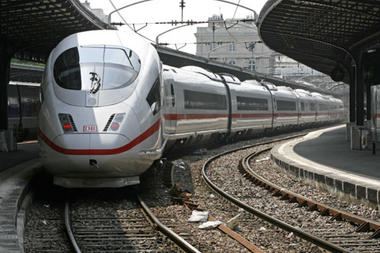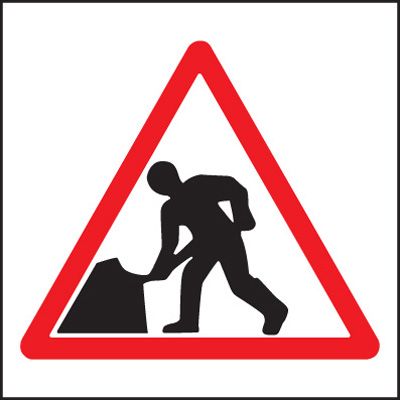The Christian Science Monitor
By Mark Clayton, Staff writer
February 19, 2010
Companies to build high-speed rail cars in the US
With a high-speed passenger rail network proposed for the US, companies are gearing up to build the equipment on American soil.
A fast train in Paris. If the United States gets high-speed passenger rail, as is already common in Europe, the equipment could be manufactured in the US, not overseas, say industry observers.
(NEWSCOM)
It's been decades since iconic American companies such as Budd and Pullman built passenger-train cars that let Americans sleep or dine in comfort as they rolled across country by rail.
But President Obama's $8 billion plan to kick-start high-speed rail construction in 13 areas around the country has US and foreign companies announcing plans to expand or build new factories to produce equipment for these passenger trains.
On Thursday, American Railcar Industries, a St. Charles, Mo.-based freight car manufacturer owned by investor Carl Icahn, announced a joint venture with Columbus, Ohio-based US Railcar to again manufacture passenger cars in the United States, at least initially at facilities in Arkansas.
"One of US Railcar Co.'s goals is to reestablish American-owned passenger train production in the United States," said Barry Fromm, one of the directors of the joint venture, in a statement.
The same day, the US rail division of German conglomerate Siemens AG announced that it had completed purchase of 20 acres of land adjacent to its existing 34-acre light-rail manufacturing plant in Sacramento, Calif. That new land would be the site for manufacturing high-speed-rail passenger trains traveling at up to 220 miles per hour.
"Siemens is ready to not only bring its proven high-speed-train technology to market, but also to build the systems right here in the United States," said Oliver Hauck, president of Siemens Mobility in the US.
Other deals are in the works as well. In December, freight locomotive giant GE announced plans to build a next-generation passenger locomotive capable of hitting 124 miles per hour. It is also developing even faster electric-powered locomotives in a joint venture with China's Ministry of Railways. At least 80 percent of the content for those trains would be from US suppliers and all final assembly would be in the US.
Spanish high-speed train manufacturer Talgo announced last summer would set up an assembly plant that would employ 80 workers in Wisconsin to meet a $47 million deal with the state to supply two trains. Close observers of that deal say that could now expand, with the company seeking to supply high-speed trains around the country.
"It's the perfect marriage of smart, 21st-century transportation investment and job creation right here at home," said Bruce Speight, director, Wisconsin Public Interest Research Group.
Meanwhile, French energy and transport company Alstom SA, whose factory in Hornell, N.Y., is one of the largest passenger rail facilities in the country, is reportedly pursuing high-speed rail contracts.
High-speed rail is arriving at a critical "tipping point" that could radically spur growth of passenger rail manufacturing, says Art Guzzetti, vice president of policy for the American Public Transportation Association, a Washington-based association of public transportation providers nationwide.
Today the market for commuter-rail systems has nearly doubled since 1992 to a roughly $2.4 billion market. Commuter-rail systems have grown from nine in 1980 to 25 today. Light-rail systems have grown from seven in 1980 to 36 today.
Beyond the need for new equipment for high-speed rail, many of the light rail and commuter systems in the US are aging, and Amtrak recently announced that it would finally begin replacing its aging rail cars and locomotives.
"There is a tipping point that we're very close to," Mr. Guzzetti said. "We're at a point where we have a big market now where there wasn't one before. Now add to that high-speed rail.... All these things point to huge growth in public transportation."
For long-time observers, these moves are more than welcome news, they represent what could become the beginning of an industry rebirth.
"We have underinvested in intercity passenger rail since the 1950s," said Thomas Simpson,of Railway Supply Institute, a Washington trade group for railway equipment manufacturers. "At long last, some recognition has come, and companies are seeing there are real opportunities here."
There's hope that the shift will create badly needed US manufacturing jobs. The Department of Transportation in December unveiled a list of 30 rail manufacturers and suppliers it described as committed to "establish or expand their base of operations in the United States and American manufacturing jobs" if chosen to supply high-speed rail or intercity passenger equipment.

Made in the US
Assorted Manufacturers




